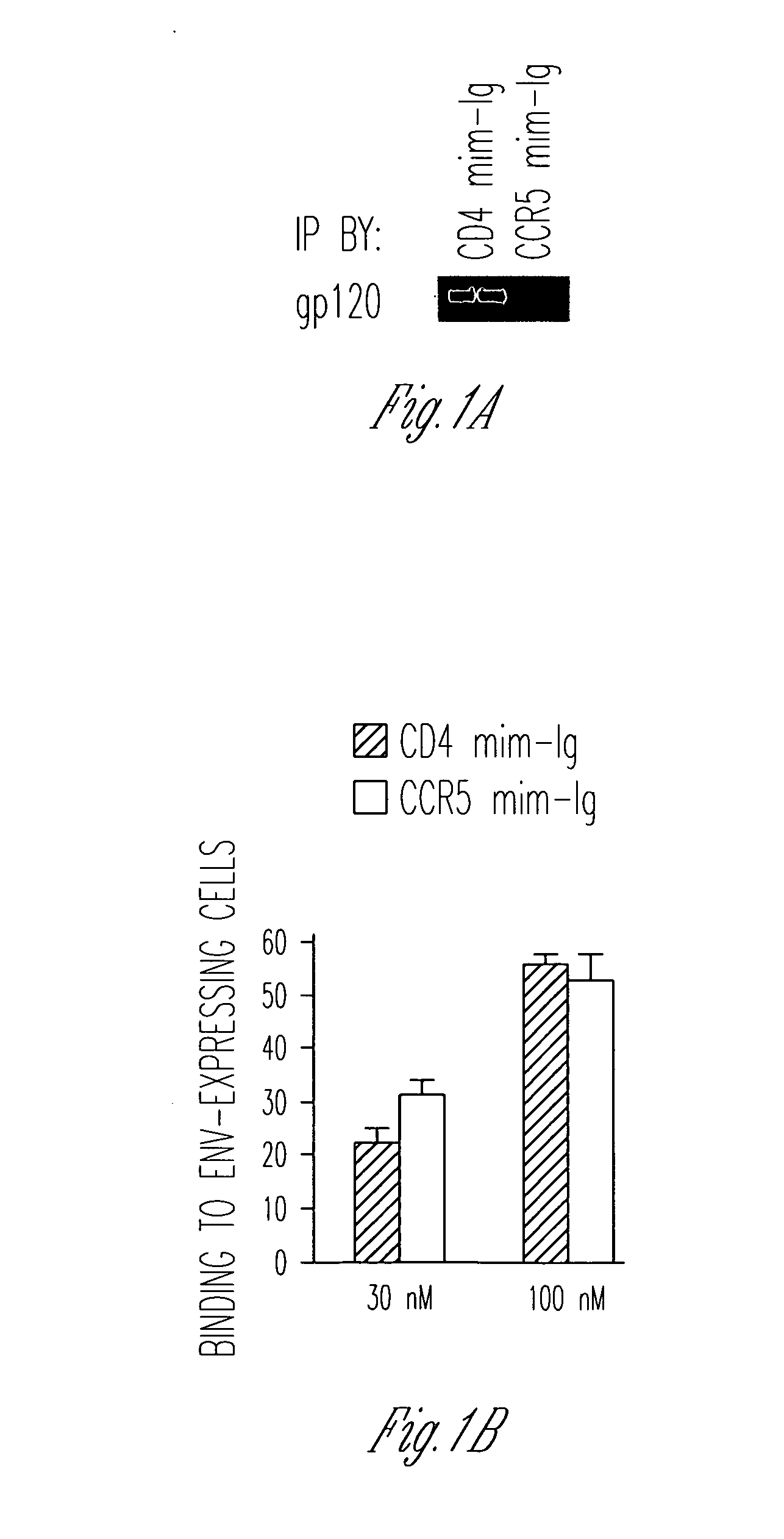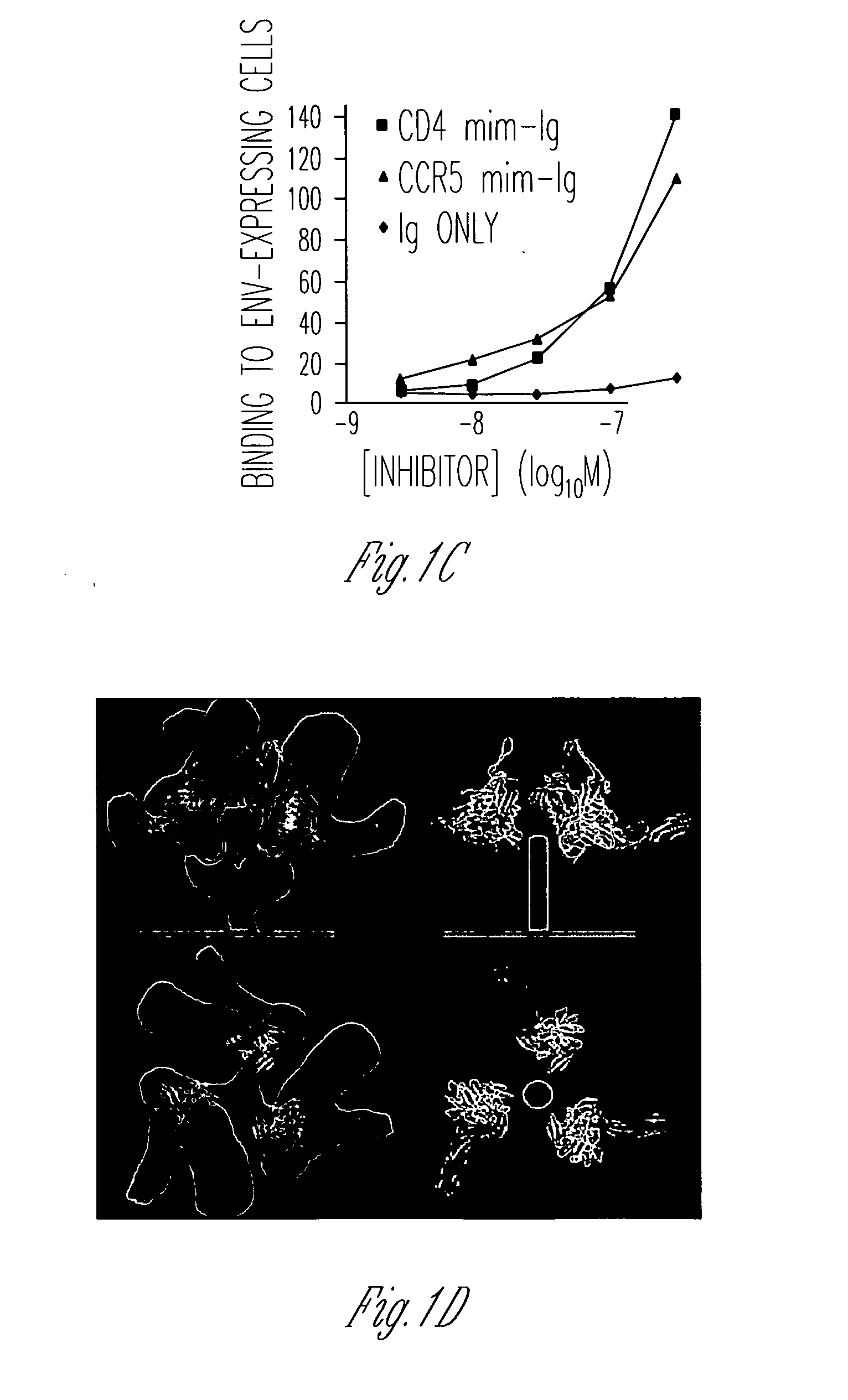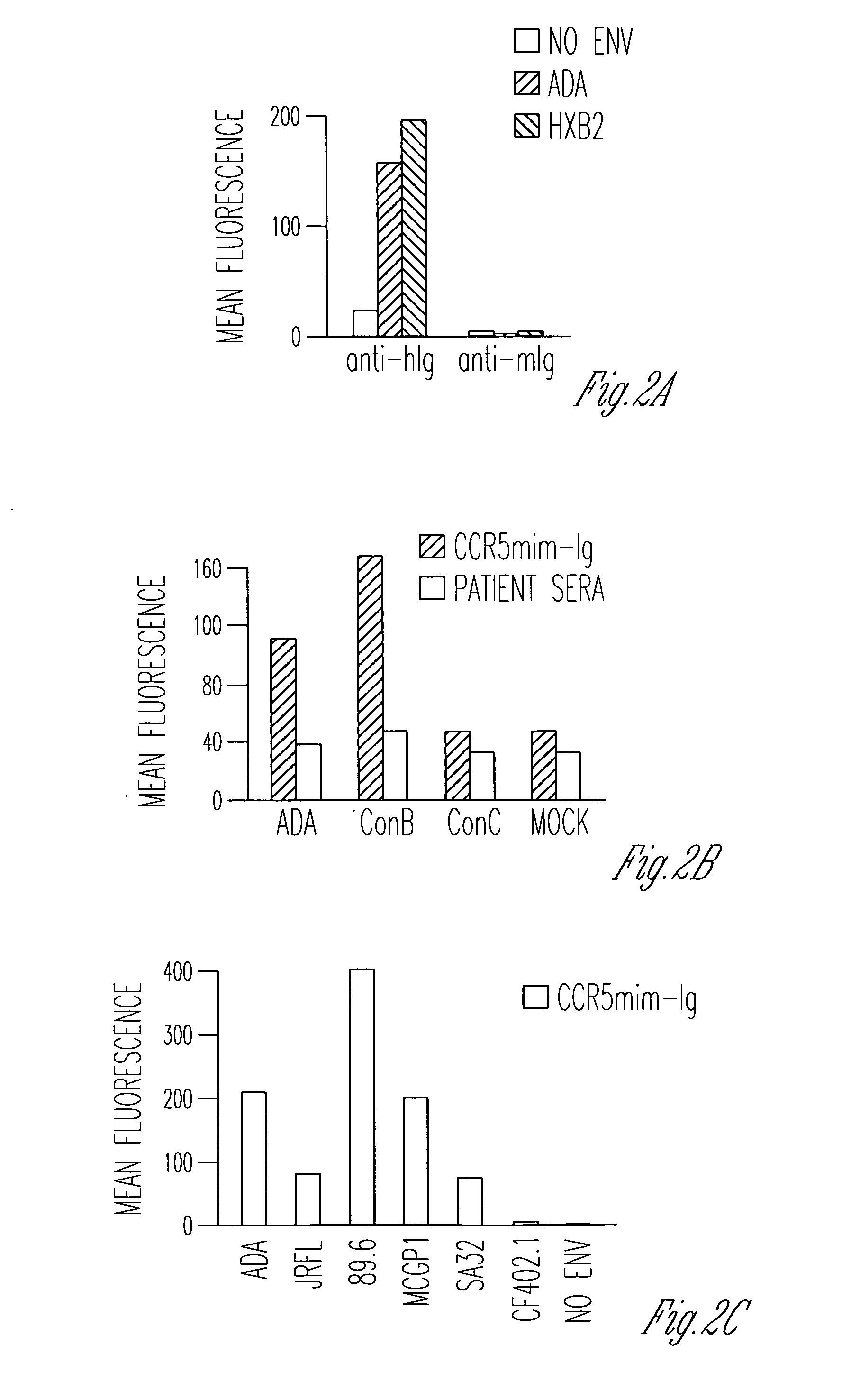Nucleic acid encoding fusion polypeptides that prevent or inhibit HIV infection
a technology of fusion polypeptides and nucleic acids, applied in the field of nucleic acid molecule encoding a fusion polypeptide, to achieve the effect of efficiently expressed, no significant side effects or toxicities, and stable suppression of viral replication
- Summary
- Abstract
- Description
- Claims
- Application Information
AI Technical Summary
Benefits of technology
Problems solved by technology
Method used
Image
Examples
example 1
Sulfated peptides based on the N-terminus of CCR5 specifically block HIV-1 infection, but only at 50-100 μM concentrations (Cormier et al., 2000 and Farzan et al., J. Exp. Med., 193:1059 (2001)). The ability of pΔE51-Ig, but not pR5-Ig, to precipitate gp120 in the presence and absence of CD4 suggested that pΔE51-Ig may be more effective at inhibiting HIV-1 infection. CD4-Ig and pΔE51-Ig were compared for their ability to inhibit entry of an infectious HIV-1 variant expressing GFP and the envelope glycoprotein of the R5X4 isolate 89.6. Virus was incubated with the CD4-positive T-cell line PM1 and the indicated peptide-fusion proteins for one hour, and then washed. Consistent with its ability to bind gp120, pΔE51-Ig inhibited infection markedly, with an IC50 reproducibly observed between 1 and 2 μM. Expectedly, CD4-Ig blocked infection in the nanomolar range. Similar results were obtained using a broader range of envelope glycoproteins of clade B isolates. Pseudovirus infection mediat...
example 2
FIG. 1 uses several peptides to further explore the effect of CCR5mim-Ig on the envelope glycoprotein. Note that to perform the flow cytometry experiments, forms of the envelope glycoproteins were used that were truncated in their cytoplasmic domains, a modification that greatly enhances their cell-surface expression. In addition to CCR5mim-Ig, a 27-amino-acid CD4-mimetic peptide (“CD4mim”), a phage-improved version of a peptide originally described by Carlo Vita's laboratory (Martin et al., Nat. Biotechnol., 21:71 (2003)) was used. This peptide has been crystallized with gp120, and was shown to induce a gp120 conformation identical to CD4-bound gp120 (Huang et al., Structure, 13:755 (2005)). Its Fc-fusion protein (“CD4mim-Ig”) binds cell-expressed envelope glycoprotein with an avidity comparable to that of CCR5mim-Ig (FIG. 1B). However, it binds soluble monomeric gp120 much better than CCR5mim-Ig (FIG. 1A). Interestingly, its binding curve to cell-expressed envelope glycoprotein re...
example 3
AAV is a single-stranded DNA parvovirus that does not cause human disease. It can be engineered to deliver a single gene-of-interest, without co-expression of viral proteins. The viral-vector particle is expressed from cells transfected with three plasmids: one that encodes the viral rep and cap proteins, one containing the adenovirus E2A and E4 genes, and one expressing a transgene-of-interest bounded by AAV inverted terminal repeats (ITRs), which facilitate its nuclear replication. Relying on the host-cell polymerase, AAV replicates efficiently in post-mitotic cells including those of muscle. Lacking necessary viral genes, AAV vectors do not integrate, but express as an episomal concatamer of viral genomes. The rate-limiting step in transgene expression is the formation of the second, complementary strand of the viral genome. This bottleneck can be circumvented by encoding the complement of the gene in the viral genome, a so-called self-complementary (sc) AAV. scAAV improves susta...
PUM
| Property | Measurement | Unit |
|---|---|---|
| pH | aaaaa | aaaaa |
| pH | aaaaa | aaaaa |
| pH | aaaaa | aaaaa |
Abstract
Description
Claims
Application Information
 Login to View More
Login to View More - R&D
- Intellectual Property
- Life Sciences
- Materials
- Tech Scout
- Unparalleled Data Quality
- Higher Quality Content
- 60% Fewer Hallucinations
Browse by: Latest US Patents, China's latest patents, Technical Efficacy Thesaurus, Application Domain, Technology Topic, Popular Technical Reports.
© 2025 PatSnap. All rights reserved.Legal|Privacy policy|Modern Slavery Act Transparency Statement|Sitemap|About US| Contact US: help@patsnap.com



